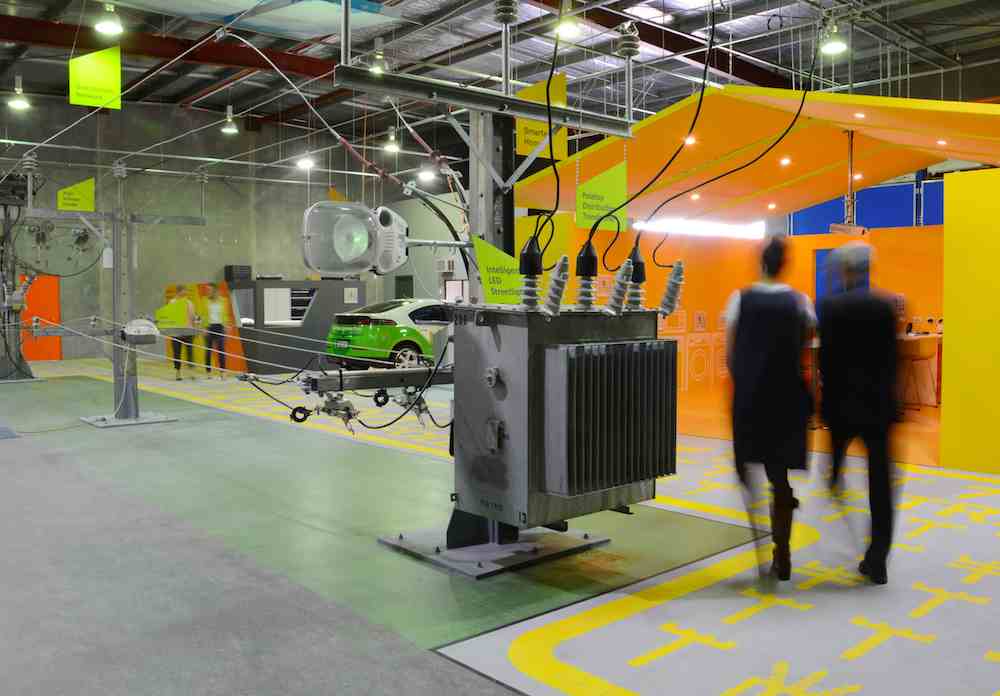The trial by SAPN – the monopoly network provider in the state – will install around 100 Tesla Energy and Samsung batteries at deep discounts and install software from Canberra-based Reposit Power.
It will be located in the northern Adelaide suburb of Salisbury and is believed to be Australia’s largest trial of combined solar and energy storage in an established suburb.
The unique trial – to be unveiled at the Energy Networks 2016 conference in Adelaide on Thursday – will begin in June. The network operators believe using solar and storage can avoid the need to spend more on grid upgrades and expansion as demand increases, underlying the value of “distributed generation.”
“In the next few years we will need to act to meet localised demand growth in Salisbury. We want to work with customers to avoid the need to invest in new poles and wires,” said Paul Roberts, SAPN’s head of stakeholder relations.
“Instead of building a new power line, we would like to see whether we can defer or avoid that by tapping into local solar PV generation and combining this with energy storage.”
SAPN estimates it will need around 100 customers to take up the offer of solar and storage to enable the company to defer the investment. The trial will be funded by the anticipated savings from the deferment of network spending and from the demand management investment scheme funds.
It will be approaching customers in Salisbury – with minimum grid consumption of 4,000kWh a year (or 2,500kWh if they already have solar) – over the next few weeks inviting them to register their interest. They are certainly being offered an interesting deal.
Customers wanting to buy an entire system of 3kW of rooftop solar and the 6.4kWh battery storage package will pay just $6,150. If they already have solar and just need the battery, then the cost is just $3,600 – a vast discount on current prices.
Another option is for customers to buy a 3kW rooftop solar system for $2,550, and rent the battery for a $500 upfront bond and a $18.50 fortnight payment over three years. The battery will remain the property of SAPN.
There may be other costs associated with meters (if installing solar for first time), additional electrical works that may be required to support the installation of the system, and an ongoing monthly fee for the monitoring equipment if customers want to use it.
The customers will be guaranteed a minimum $500 saving on their electricity bill.
SAPN chose Tesla and Samsung batteries after an open tender, and SAPN decided they met their specifications. Both will be offering 6.4kWh systems that are currently available in Australia – considered to be the leading battery market in the world.
The trial will also use energy management software provided by Reposit Power, which will help determine the best option for customers in utilising power being generated by their PV panels or stored in their battery, and potentially for trading with the wholesale market at peak times.
The trial – and the buy-in by the network operator – is significant because it helps change the rhetoric about rooftop solar; particularly in a state which recently closed its last coal-fired generator and is leading Australia, indeed the world, in the integration of wind and solar resources.
Instead of being demonised in some quarters as a cost to consumers – courtesy of over-generous feed in tariffs, and despite some obvious network benefits – the combination of solar and storage is seen as a big benefit to individual and other consumers, due to savings on networks costs and wholesale markets.
Roberts says the combinations of solar PV, battery storage and grid connections are the “future of energy provision”. Indeed, studies suggest that up to $400 billion will be invested by customers over the next few decades in rooftop solar and battery storage.
“With the right settings and approach they will provide benefits for customers and to us as managers of the network and also help contain long–term network costs for customers,” he said.
“We are excited about the future and the opportunities due to advancements in solar and storage technology. We think our distribution network will be a vital component in helping our customers and our state to derive the greatest benefit from investment in these technologies.
“The trial gives us an opportunity to explore the customer, technological and capability impacts on our regulated network business.”
But the trial also has broader implications, both for the design of new energy systems and for the uptake of solar and storage, and for the management of networks and the future of current business models, both for those networks and for the operators of centralised fossil fuel generators and the retailers.
One issue is around the ability of networks to access the “consumer” market and make offers to customers on solar and storage to help defray costs. A recent study by Victoria’s network operator Ausnet found that the benefits of rooftop solar and storage were about equal for consumers and networks.
Roberts said the trial in Salisbury – like the tender it has put out for Kangaroo Island, where a cable to the mainland could be replaced by localised storage and generation – is about management of the regulated network.
“This is absolutely about management of the regulated network, and exploring how we can be using customers to avoid the need for network investment, and to address capacity issues in the network,” Roberts said.
“The rules encourage us to look at long-term options. We should explore opportunity for customer integration. We believe this is what managing networks into the future will be about.”
But new rules being discussed by regulators, and pushed hard by retailers, want the networks to be restricted through “ring fencing”, to only using the “de-regulated” part of their business to address customers. It is going to be an interesting battle.











